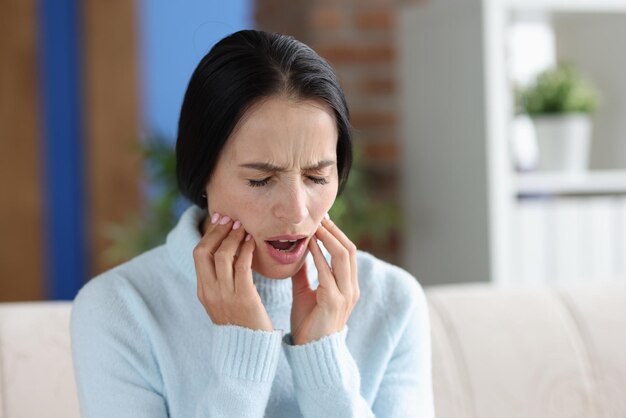
20 May TMJ DISORDER
What is TMJ?
TMJ disorder affects the temporomandibular joint, also known as the TMJ, which is the part of the face that connects the upper jaw which is the maxilla to the lower law which is called the mandible. The temporomandibular joint functions as a sliding hinge which helps in the opening and closing of the mouth.
Dysfunction in this joint can cause severe discomfort as well as pain to the patient. This is termed TMJ Disorder.
Some of the symptoms of TMJ disorder that are dental related are as follows:
- Clicking sound while opening and closing the mouth
- Pain while opening and closing the mouth
- Difficulty and pain while chewing
- Locking of the jaw while yawning or opening the mouth too much
- Deviation of the jaw while opening the mouth
- Tenderness on palpation of the jaw muscles around the cheek and ear
- The patient may also complain of strain in the neck and shoulder
TMJ Disorder can often be confused with other health issues as the symptoms
- Ear pain, ear infection, and ringing in the ear
- Loss of hearing
- Migraine
- Mental health issues or being too anxious
- Dizziness
- Neck and shoulder pain
Diagnosing TMJ Disorder is very tricky. If not diagnosed properly, the patient continues living in pain and discomfort for a very long time. Addressing the issue also becomes an issue because the symptoms vary from the head to the jaw to the neck and shoulder. As a result, the patient is also unable to understand if they require dental assistance or medical assistance. This causes the issue to aggravate and reach a severe stage wherein the patient may require a surgical approach to solve the problem.
This makes it very important for the patient to get professional help from someone experienced in TMJ and orofacial pain disorders. Initially, the TMJ expert will advise the patient to take an x-ray of the temporomandibular joint. The X-ray will help detect the severity of the problem. The TM joint is assessed and the conclusions are drawn accordingly.
What are the different ways to treat TMJ pain?
- TMJ Splint: Splints are trays that cover the entire set of teeth, either of the upper or lower arches. They are made of either resin or acrylic material and are hard in consistency. Splints provide long-term relief for TMJ disorder. Most often TMJ issues get solved with the help of splints. The dentist provides instructions regarding the usage. Mostly, the patient needs to wear it for 6-8 hours a day and at regular time intervals. The patient is asked to use this appliance for a period of three to four months depending on the severity of the problem. Timely follow-ups are required as advised by the dentist. Follow-ups are crucial for such things as the dentist gets to keep track of progress and change the line of treatment as per requirement.
- Pain Relievers: This line of action is not advisable for long-term relief. They only alleviate the pain for a short period of time. Non-steroidal anti-inflammatory drugs are helpful in such cases however, these also provide short-term relief. Chronic usage of such drugs can affect the organs causing stomach ulcers, and kidney problems, and some drugs can also affect the heart resulting in strokes and heart attacks. When the TMJ disorder is severe, the muscles are strained and in order to relieve it, dentists prescribe a mild dosage of muscle relaxants for a maximum of 5-7 days. Masking the pain is not going to help, identifying the underlying issue is extremely important in cases like this.
- Natural Therapy: This line of action can be incorporated as a part of a comprehensive plan after counseling the patient. Sometimes patients may want to gradually proceed with the treatment, non-invasively. For such cases, the dentist may provide some treatments as follows:
- Mouth-opening exercises
- Some specialized stretches for the Jaw
- Use some ointments and essential oils
- Alternative exercises like blowing air into the balloon and blowing the whistle.
- Sometimes stress management can also alleviate the pain to some extent.
- External Heat application, gargling the mouth with warm water a couple of times a day
Depending on the intensity of the TMJ issue, this exercise alone may not help. The patient needs to be counseled regarding the requirement of comprehensive treatment in case the pain and issue do not get solved.
Many times, patients read articles online or look for at-Home remedies to solve the issue which can possibly result in the issue to worsen. Hence it is necessary to seek professional guidance that has experience in issues related to temporomandibular joint disorder and related orofacial problems.




